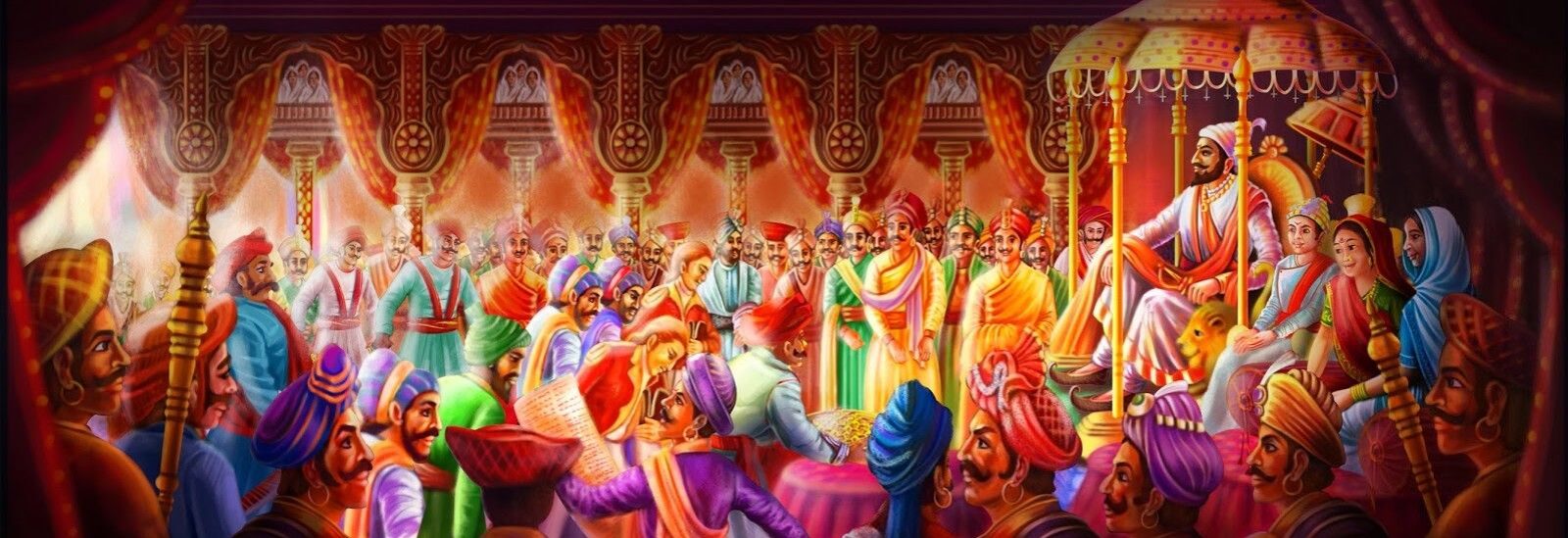Continue reading from Part XVI
Chauthai (Quarter):
Currency, trade taxes, land revenue etc. were then the main and permanent sources of income of Chhatrapati. But the Maharaj’s Gangajali used to cover from a income gain through Chauthai compair to the income from revenue and taxes. Although its form is irregular, jbut it is permanent. Chauth or quarter means one-fourth of the revenue of Swarajya as well as enemy-held territory. The revenue derived from the revenue of such enemy-held territory is also termed as ‘ransom’. In simple words, Chauthai is the tribute exacted by the strong from the weak. In order to strengthen Swarajya, Maharaj used to collect tribute from the enemy’s territory. This tribute helped the Maharaj to keep the economy of Swarajya in order.
Soldiers had to constantly use their weapons to get chauthai. Lacking military power, no king or ruler, whether Hindu or Muslim, would have recognized the royal quarter, and regular recovery would have been impossible. Hence, Chauthai means is a extortion, which is levied by military force in defiance of national and international cues. Chauthai means giving 1/4th of the total revenue of the state to the strong enemy so that the weak enemy does not suffer the loss of the state at the hands of the strong enemy. If chauthai was not given or it was interrupted, the stronger enemy would attack and plunder the kingdom of the weaker enemy. This right has been going on since pre-Shiva times. As the Maharaj’s army did not disturb the citizens while collecting chauthai, the citizens in the enemy’s territory willingly gave chauthai to maintain peace and order. At the same time, Maharaj and his army tried to protect the states which were giving chauthai from other enemies. But there is no moral responsibility towards the Maharaj or his army for the same. This right was given to the one who had the courage to collect the chauthai.
When a weaker enemy’s territory was conquered in battle, it came under the rule of the stronger enemy and the weaker enemy or the king had to give up all his rights. But even if the stronger enemy conquered the territory of the weaker enemy, the weaker enemy did not lose any of his rights by giving chauthai. A chauthai is a tribute extorted by a strong army from the territory of a weak enemy by terror, so chauthai may not have been legally recognized.
A chauthai was collected in the form of cash or promissory note. Chauthai was mainly done by the government and rich men. The general public was not bothered by it.
According to Sabhasad Bakhari,
‘शिवाजी महाराजांचा एकूण महसूल एक कोटी होन इतका होता आणि अतिरीक्त 80 लाख होन हे महाराजांना चौथाईच्या स्वरूपात मिळायचे.’
Translation:
‘Shivaji Maharaj’s total revenue was one crore hon and an additional 80 lakh hon was received by Maharaj in the form of a Chauthai.’
But according to Sir Jadunath alias Yadunath Sarkar,
‘शिवाजी महाराजांचा एकूण महसूल सात कोटी रूपये इतका होता.’
Translation:
‘Shivaji Maharaj’s total revenue was seven crore rupees.’
Sardeshmukhi:
Sardeshmukhi means one tenth of the revenue of Swarajya as well as the territory under enemy control. Shivaji Maharaj’s right over Sardeshmukhi was legitimate. Sardeshmukhi was going on before Shivakaal. When Shivaji Maharaj established the Swarajya, he became the Sardeshmukh of the entire Swarajya as Chhatrapati. Sardeshmukh used to do the work of Deshmukhs as the superiors of Deshmukhs like collecting the land revenue and depositing it to the government, punishing the thief and giving the goods to the real owner of that goods. For this performance, Sardeshmukh used to get 10 percent of the income from the government aid. Accordingly, this income was added to the private income of the Maharaj as Sardeshmukh. Accordingly, Maharaj appointed Naro Bhikaji Subhedar on 4th Shukla Paksha of May 1590 to recover the right of Sardeshmukhi in Kalyan.
Continue reading with Part XVIII
or goto Part I, Part II, Part III, Part IV, Part V, Part VI, Part VII, Part VIII, Part IX, Part X, Part XI, Part XII, Part XIII, Part XIV, Part XV


Pingback: Revenue System (Part XVIII- Farm, Farmer and Revenue System) – Chatrappati Blogging
Pingback: Revenue System (Part III – Tax Collecting Authorities) – Chatrappati Blogging
Pingback: Revenue System (Part XIV- Other Taxes) – Chatrappati Blogging
Pingback: Revenue System (Part XVI- Other Revenue) – Chatrappati Blogging